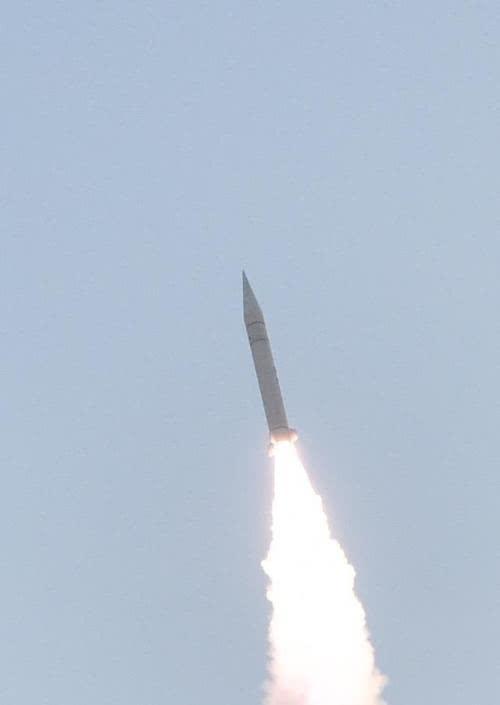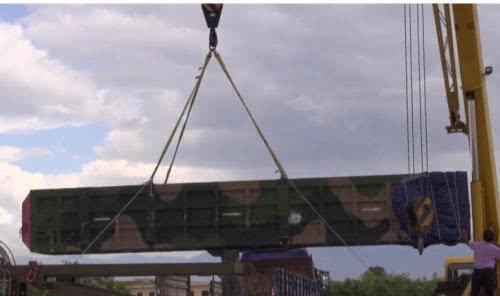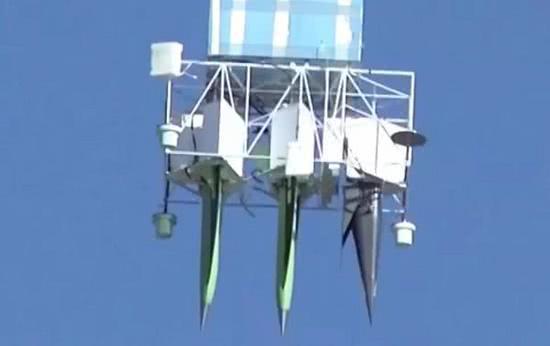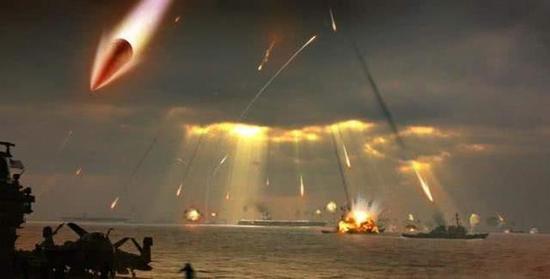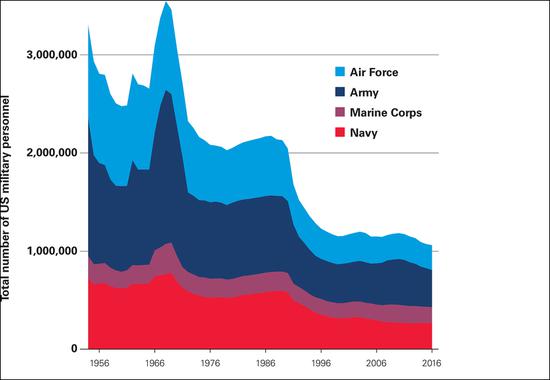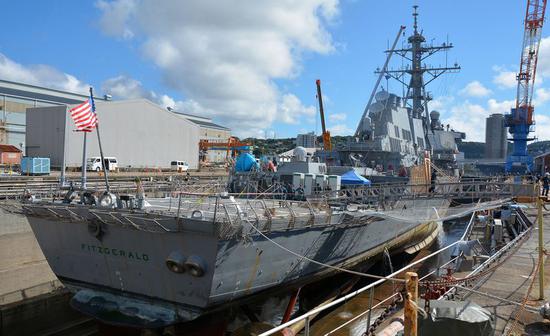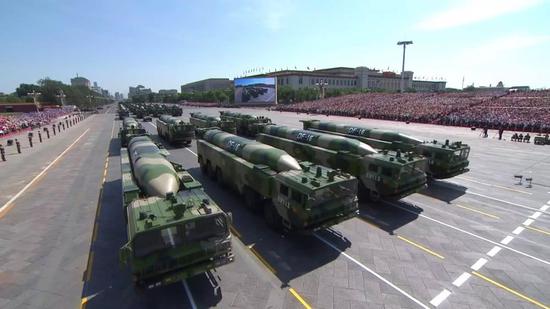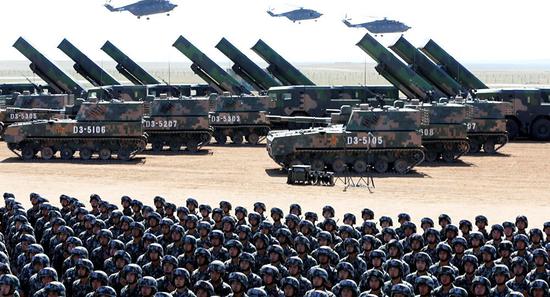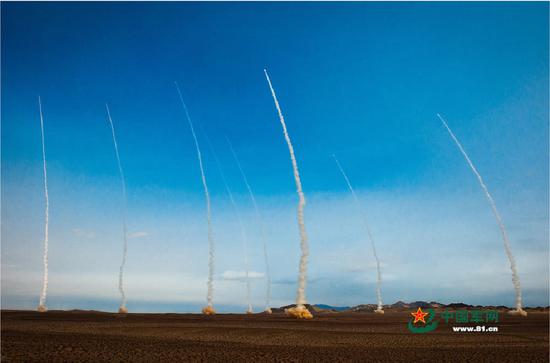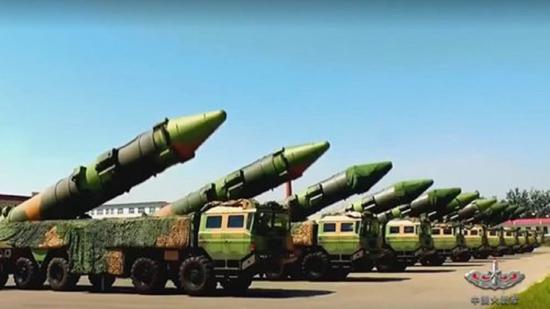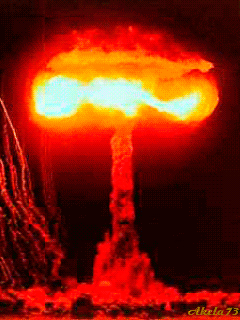https://hk.news.yahoo.com/澳洲智庫警告-美軍在太平洋漸力不從心-045001966.html
澳洲智庫警告 美軍在太平洋漸力不從心

法新社
1k 人追蹤
2019年8月19日 下午12:50

澳洲智庫警告 美軍在太平洋漸力不從心
(法新社雪梨19日電) 澳洲一間高級智庫警告,美 國在太平洋已不再有軍事優勢,恐無力保護盟邦對抗中 國。 一份由雪梨大學的「美國研究中心」(United States Studies Centre)今天發布的嚴峻報告指出, 美軍是一支「萎縮中的部隊」,「危險地過度延伸,也 難以有效準備來對抗中國」。 報告作者們指因數十年之久的中東戰事、長年保護 夥伴的義務與經費難再支應足夠軍事投資,導致華府已 「戰略破產」,將使太平洋的盟邦暴露於危險。 「相對地,中國卻因大規模投資先進武器系統,使 其軍力對區域構成的挑戰日增。」 專家們相信,美軍若能部署陸基飛彈,並調整美軍 陸戰隊的角色,將是對抗中國的有效利器;此外,區域 集體防衛,像澳洲與日本分擔更多責任,也不可或缺。
https://www.bloomberg.com/news/arti...could-crush-some-u-s-military-assets-in-hours
Photographer: Mark Wilson/Getty Images
politics
China Missiles Could Overwhelm U.S. Military in Asia in ‘Hours’, Says Think Tank
By
Jason Scott
August 19, 2019, 9:35 AM GMT+8
LISTEN TO ARTICLE
1:16
SHARE THIS ARTICLE
Share
Tweet
Post
Email
In this article
3368284Z
UNIVERSITY OF SYDNEY
Private Company
0917666D
UNITED STATES STUDIES CENTRE
Private Company
A decade of “delayed and unpredictable funding” for the U.S. military’s budget has seen America lose its primacy in the Western Pacific, giving the edge to an increasingly sophisticated China, a Sydney-based think tank warned.
China’s “growing arsenal of accurate long-range missiles poses a major threat to almost all American, allied and partner bases, airstrips, ports and military installations in the Western Pacific,” the University of Sydney’s United States Studies Centre said in a report released Monday.
“As these facilities could be rendered useless by precision strikes in the opening hours of a conflict, the PLA missile threat challenges America’s ability to freely operate its forces from forward locations throughout the region,” it said, referencing China’s People’s Liberation Army.
The report recommended that Australia, a major ally of the U.S., should “increase stockpiles and create sovereign capabilities in the storage and production of precision munitions, fuel and other material necessary for sustained high-end conflict.”
While China is Australia’s largest trading partner, the nations have been at odds over series of issues, including the Australian government’s ban on Huawei Technologies Co. from bidding for 5G contracts and its accusation that Beijing has been “meddling” in national affairs.
https://www.theguardian.com/austral...ndo-pacific-region-faces-unprecedented-crisis
US defence strategy in Indo-Pacific region faces 'unprecedented crisis'
Australia should diversify its network of defence allies as the military might of America weakens, report warns
Ben Doherty
@bendohertycorro
Sun 18 Aug 2019 19.00 BST Last modified on Mon 19 Aug 2019 05.26 BST
Shares
169
Comments
234

Australia can no longer rely on the US alone for its security in the Indo-Pacific region, the United States Studies Centre report warns. Photograph: Ron Reeves/AP
America’s military authority is waning and it is ill-prepared to go to war with China in the Indo-Pacific region, a new report from the United States Studies Centre has warned, arguing Australia must move towards a shared reliance on a network of allies, in particular Asian militaries such as Japan, for its security.
The report, Averting Crisis, says America’s defence strategy in the Indo-Pacific region is in “the throes of an unprecedented crisis”, created by a mismatch between its ambition to remain the region’s dominant military power, and an overstretched armed force with falling and failing resources.
“Faced with an increasingly contested regional security landscape and with limited defence resources at its disposal, the United States military is no longer assured of its ability to single-handedly uphold a favourable balance of power in the Indo-Pacific,” the report, by the US Studies Centre’s Ashley Townshend and Brendan Thomas-Noone, says.
“China, by contrast, is growing ever more capable of challenging the regional order by force as a result of its large-scale investment in advanced military systems.”
The US will remain influential – it still spends broadly as much on defence as the next eight largest national defence budgets combined – but its military has been overstretched by two decades of counter-insurgency wars in the Middle East, and faces continuing global commitments, ageing equipment, and training cuts.
And while America wants to remain the dominant military power in the Indo-Pacific region, it faces growing deficits and rising public debt, as well as political resistance to continuing increases in military spending.
https://www.channelnewsasia.com/new...fic--warns-top-australian-think-tank-11821284
World US power waning in Pacific, warns top Australian think tank
A hard-hitting report from a top Australian think tank has warned that the United States no longer has military primacy in the Pacific AFP/Amy PHAN
19 Aug 2019 12:53PM
Share this content
Bookmark
SYDNEY: The United States no longer has military primacy in the Pacific and could struggle to defend allies against China, a top Australian think tank has warned.
A hard-hitting report from the United States Studies Centre at the University of Sydney released on Monday (Aug 19) said the US military is an "atrophying force" that is "dangerously overstretched" and "ill-prepared" for a confrontation with China.
If correct, the assessment has far-reaching implications for US allies like Australia, Taiwan and Japan who depend on American security guarantees.
Donald Trump's presidency has deepened concerns that Washington would not defend its allies in the face of aggression from China. But this latest report has suggested that the United States may struggle to help even if it wanted to.
Accusing Washington of "strategic insolvency", the authors said decades-long Middle East wars, partisanship and under-investment have left Pacific allies exposed.
"China, by contrast, is growing ever more capable of challenging the regional order by force as a result of its large-scale investment in advanced military systems," they warned.
Under President Xi Jinping, China's official defence budget has increased by around 75 per cent to US$178 billion - although the true figure is believed to be much more.
Crucially, Beijing has invested in precision ballistic missiles and counter-intervention systems that would make it difficult for the US military to reach contested areas quickly.
According to the report, "almost all American, allied and partner bases, airstrips, ports and military installations in the Western Pacific" lack hardened infrastructure and are under major threat.
That advantage could be used to seize territory in Taiwan, Japanese-administered islands or the South China Sea before US forces could get there.
Experts believe that the deployment of US land-based missiles and a changed role for the United States Marine Corps will be vital to countering China, as well as collective regional defence -- with the likes of Australia and Japan doing more.
In Australia, concerns have been growing about inadequate defences, prompting debate about whether the country should think about developing nuclear weapons.
Similar discussions are have periodically taken place in neighbouring Indonesia.
A separate report released on Sunday by the Australian Strategic Policy Institute recommended Australia boost and harden military capabilities in the thinly-populated north of the country.
"Because of the significantly reduced warning times for future conflict," wrote author John Coyne, it is likely the north of Australia will be used as a forward operating base or a "lily pad" to reach conflict zones.
The US military has already earmarked around US$210 million to boost a Marine Corps base near Darwin.
During a recent visit to Australia, Defense Secretary Mark Esper suggested the United States wants to deploy intermediate-range missiles in Asia. So far, the Australian government has stressed it has not received a formal request to host those weapons.
Source: AFP/ga
澳洲智庫警告 美軍在太平洋漸力不從心

法新社
1k 人追蹤
2019年8月19日 下午12:50

澳洲智庫警告 美軍在太平洋漸力不從心
(法新社雪梨19日電) 澳洲一間高級智庫警告,美 國在太平洋已不再有軍事優勢,恐無力保護盟邦對抗中 國。 一份由雪梨大學的「美國研究中心」(United States Studies Centre)今天發布的嚴峻報告指出, 美軍是一支「萎縮中的部隊」,「危險地過度延伸,也 難以有效準備來對抗中國」。 報告作者們指因數十年之久的中東戰事、長年保護 夥伴的義務與經費難再支應足夠軍事投資,導致華府已 「戰略破產」,將使太平洋的盟邦暴露於危險。 「相對地,中國卻因大規模投資先進武器系統,使 其軍力對區域構成的挑戰日增。」 專家們相信,美軍若能部署陸基飛彈,並調整美軍 陸戰隊的角色,將是對抗中國的有效利器;此外,區域 集體防衛,像澳洲與日本分擔更多責任,也不可或缺。
https://www.bloomberg.com/news/arti...could-crush-some-u-s-military-assets-in-hours
Photographer: Mark Wilson/Getty Images
politics
China Missiles Could Overwhelm U.S. Military in Asia in ‘Hours’, Says Think Tank
By
Jason Scott
August 19, 2019, 9:35 AM GMT+8
- Sydney think tank warns of growing Chinese weapons arsenal
- New report recommends Australia increase its own stockpiles
LISTEN TO ARTICLE
1:16
SHARE THIS ARTICLE
Share
Tweet
Post
In this article
3368284Z
UNIVERSITY OF SYDNEY
Private Company
0917666D
UNITED STATES STUDIES CENTRE
Private Company
A decade of “delayed and unpredictable funding” for the U.S. military’s budget has seen America lose its primacy in the Western Pacific, giving the edge to an increasingly sophisticated China, a Sydney-based think tank warned.
China’s “growing arsenal of accurate long-range missiles poses a major threat to almost all American, allied and partner bases, airstrips, ports and military installations in the Western Pacific,” the University of Sydney’s United States Studies Centre said in a report released Monday.
“As these facilities could be rendered useless by precision strikes in the opening hours of a conflict, the PLA missile threat challenges America’s ability to freely operate its forces from forward locations throughout the region,” it said, referencing China’s People’s Liberation Army.
The report recommended that Australia, a major ally of the U.S., should “increase stockpiles and create sovereign capabilities in the storage and production of precision munitions, fuel and other material necessary for sustained high-end conflict.”
While China is Australia’s largest trading partner, the nations have been at odds over series of issues, including the Australian government’s ban on Huawei Technologies Co. from bidding for 5G contracts and its accusation that Beijing has been “meddling” in national affairs.
https://www.theguardian.com/austral...ndo-pacific-region-faces-unprecedented-crisis
US defence strategy in Indo-Pacific region faces 'unprecedented crisis'
Australia should diversify its network of defence allies as the military might of America weakens, report warns
Ben Doherty
@bendohertycorro
Sun 18 Aug 2019 19.00 BST Last modified on Mon 19 Aug 2019 05.26 BST
Shares
169
Comments
234

Australia can no longer rely on the US alone for its security in the Indo-Pacific region, the United States Studies Centre report warns. Photograph: Ron Reeves/AP
America’s military authority is waning and it is ill-prepared to go to war with China in the Indo-Pacific region, a new report from the United States Studies Centre has warned, arguing Australia must move towards a shared reliance on a network of allies, in particular Asian militaries such as Japan, for its security.
The report, Averting Crisis, says America’s defence strategy in the Indo-Pacific region is in “the throes of an unprecedented crisis”, created by a mismatch between its ambition to remain the region’s dominant military power, and an overstretched armed force with falling and failing resources.
“Faced with an increasingly contested regional security landscape and with limited defence resources at its disposal, the United States military is no longer assured of its ability to single-handedly uphold a favourable balance of power in the Indo-Pacific,” the report, by the US Studies Centre’s Ashley Townshend and Brendan Thomas-Noone, says.
You can sell your soul for a pile of soy beans, or you can protect your people
Mike Pompeo
“China, by contrast, is growing ever more capable of challenging the regional order by force as a result of its large-scale investment in advanced military systems.”
The US will remain influential – it still spends broadly as much on defence as the next eight largest national defence budgets combined – but its military has been overstretched by two decades of counter-insurgency wars in the Middle East, and faces continuing global commitments, ageing equipment, and training cuts.
And while America wants to remain the dominant military power in the Indo-Pacific region, it faces growing deficits and rising public debt, as well as political resistance to continuing increases in military spending.
https://www.channelnewsasia.com/new...fic--warns-top-australian-think-tank-11821284
World US power waning in Pacific, warns top Australian think tank
A hard-hitting report from a top Australian think tank has warned that the United States no longer has military primacy in the Pacific AFP/Amy PHAN
19 Aug 2019 12:53PM
Share this content
Bookmark
SYDNEY: The United States no longer has military primacy in the Pacific and could struggle to defend allies against China, a top Australian think tank has warned.
A hard-hitting report from the United States Studies Centre at the University of Sydney released on Monday (Aug 19) said the US military is an "atrophying force" that is "dangerously overstretched" and "ill-prepared" for a confrontation with China.
If correct, the assessment has far-reaching implications for US allies like Australia, Taiwan and Japan who depend on American security guarantees.
Donald Trump's presidency has deepened concerns that Washington would not defend its allies in the face of aggression from China. But this latest report has suggested that the United States may struggle to help even if it wanted to.
Accusing Washington of "strategic insolvency", the authors said decades-long Middle East wars, partisanship and under-investment have left Pacific allies exposed.
"China, by contrast, is growing ever more capable of challenging the regional order by force as a result of its large-scale investment in advanced military systems," they warned.
Under President Xi Jinping, China's official defence budget has increased by around 75 per cent to US$178 billion - although the true figure is believed to be much more.
Crucially, Beijing has invested in precision ballistic missiles and counter-intervention systems that would make it difficult for the US military to reach contested areas quickly.
According to the report, "almost all American, allied and partner bases, airstrips, ports and military installations in the Western Pacific" lack hardened infrastructure and are under major threat.
That advantage could be used to seize territory in Taiwan, Japanese-administered islands or the South China Sea before US forces could get there.
Experts believe that the deployment of US land-based missiles and a changed role for the United States Marine Corps will be vital to countering China, as well as collective regional defence -- with the likes of Australia and Japan doing more.
In Australia, concerns have been growing about inadequate defences, prompting debate about whether the country should think about developing nuclear weapons.
Similar discussions are have periodically taken place in neighbouring Indonesia.
A separate report released on Sunday by the Australian Strategic Policy Institute recommended Australia boost and harden military capabilities in the thinly-populated north of the country.
"Because of the significantly reduced warning times for future conflict," wrote author John Coyne, it is likely the north of Australia will be used as a forward operating base or a "lily pad" to reach conflict zones.
The US military has already earmarked around US$210 million to boost a Marine Corps base near Darwin.
During a recent visit to Australia, Defense Secretary Mark Esper suggested the United States wants to deploy intermediate-range missiles in Asia. So far, the Australian government has stressed it has not received a formal request to host those weapons.
Source: AFP/ga

